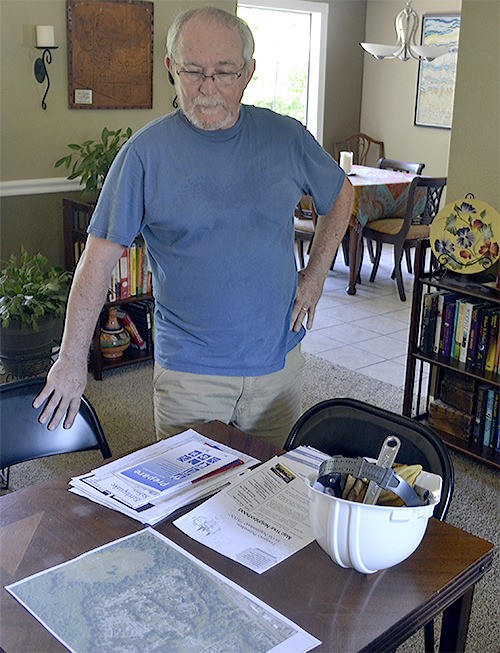MARYSVILLE – When Marshall Parker heard about the danger of more oil trains coming through town, he worried about his safety and that of his neighbors.
Instead of just worrying, he decided to do something about it. He contacted Diana Rose, emergency management officer with the city, and started the first Map Your Neighborhood community.
The goal is to get neighbors to work together in case of disaster because it could take days for emergency responders to help. Neighbors can save lives, and reduce the severity of injuries and property damage.
Parker hosted the 90-minute meeting where the neighbors learned the 9-Step Neighborhood Response Plan. They identified skills that neighbors have, such as a doctor or nurse. They identified who has supplies, such as chainsaws or generators that could be valuable in a disaster. They also mapped where natural gas meters and propane tanks are so they can be shut off quickly to reduce the threat of fire. Also, a list is made for specific needs of neighbors, such as for the elderly or disabled.
A sidelight of the program is it builds stronger communities and improves quality of life.
“I’ve lived here for years, and now everybody waves and smiles,” Parker said.
Rose is looking for more residents who want to help their neighbors “Get Emergency Action Ready.”
The city can’t force folks to do it, so she likes someone in the neighborhood to take the initiative, like Parker did. That person would put signs up and go door to door to try to get the area involved.
Rose met with Parker’s neighborhood in January. About 24 people showed up. They were concerned because a tree came down during a storm in November, and it blocked the only road out of the neighborhood. Neighbors ended up cutting up the tree themselves because they didn’t want to wait for help from the city.
“It wasn’t life-threatening” but it got them thinking about what they would do if there was a fire or a train derailment, Rose said.
When an area signs up for the GEAR training, Rose comes out and shows a DVD on disaster preparedness. A big map is made and neighbors talk about their skill sets.
“People actually meet each other,” Rose said.
They find out they live next to paramedics and certified nursing assistants. They find out one person is a licensed child care provider, so that person and a grandma can keep an eye on the children to keep them safe, while others do different jobs.
They find out one person is a camping enthusiast and has enough gear to help people for days, Rose added.
Houses are identified, along with a list of names and phone numbers.
“Immediate rescue is not going to happen,” Rose said. “That’s not realistic. We need to get that into everybody’s head.”
She said the program helps get conversations started. In this case, the neighborhood decided it needs another access road. So it is looking to seeing how that could be accomplished.
One thing that is good to find out is if anyone in the neighborhood has a ham radio. Rose said the area found out during the Marysville-Pilchuck shooting and when the Skagit bridge went out that cell phones don’t work and land lines are too busy. Parker said using text messaging and having a contact person out of state are smarter ways to go.
“I’m not trying to scare anyone, but people need to take that step,” and be prepared, Rose said.
She said people should have emergency kits in their cars and at home. She admitted the lists of supplies can seem overwhelming, but if you break it down and buy a few things every week a kit will be ready in no time.
Rose even she has a hard time keeping her kits up to date, such as making sure fresh batteries are cycled in before they go bad. Also, don’t forget items for your pets.
“Every time I dig into it I think I should have more,” she said. “But I already have more flashlights than any human should have.”
Mapping your neighborhood won’t guarantee nothing bad will happen in an emergency.
“It will get people talking about what needs to happen,” she said. “But it isn’t going to save everybody.”
Parker’s effort focused on people who lived on 38th Drive, about 24 homes. But there are several other streets in that neighborhood, with about 100 homes, and he’d like to get them involved, too.
At their neighborhood meeting, they found out one neighbor had been in the military. The command post will be at his house.
“You find out who you can count on in an emergency,” Parker said. “And you find out who does not want to get involved.”



